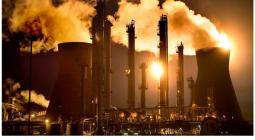Methane Abatement in Developing Countries
The global oil and gas sector is the second highest source of anthropogenic methane emissions after agriculture, but it also has the largest abatement potential. Yet, global methane emissions are not reducing at the scale and pace needed to limit warming to a level consistent with Paris-aligned 1.5°C pathways, as global demand for natural gas is growing and expected to reach new all-time highs in 2024 and 2025 according to IEA projections. In the absence of concerted, Paris-aligned action on climate, current government plans and projections would lead to an increase in global oil and gas production until at least 2050 according to the 2023 Production Gap Report. At a time of global energy and climate crises, methane abatement has become an imperative for climate mitigation efforts consistent with the objective of achieving global net-zero energy systems by mid-century but also for meeting pressing energy security needs. Developing countries producing oil and gas stand to benefit in several respects from the adoption of upstream oil and gas methane abatement regulations:
-
There is growing evidence that the introduction of methane regulations can lead to significant emissions reduction in the upstream segment of the value chain.
-
Methane emissions regulations can help developing countries producing oil and gas improve public health and air quality, and retain the competitiveness of their exports as natural gas importing requirements tighten. They are also a key enabler for the effective implementation of emerging cooperative frameworks for cleaning up internationally traded fossil fuels.
-
Regulatory requirements consistent with international standards on measurement, monitoring, reporting and verification can create a level playing field and a conducive enabling environment across public and private actors in the upstream value chain to avoid shifting emissions to developing countries and the proliferation of voluntary standards. International harmonisation supports enhanced international coherence in climate mitigation, enables cost-effective corporate compliance across jurisdictions, and reduces green washing concerns.
To that end, developing countries producing oil and gas are advised to develop robust methane abatement frameworks with the following elements:
-
Set specific, and ideally incremental, sector-specific methane emissions reduction targets in Nationally Determined Contributions (NDCs), and embed these within Long-term Low Greenhouse Gas Emission Development Strategies (LT-LEDS), by clearly articulating how natural gas production and use contributes to the achievement of climate goals, sustainable development priorities and energy security needs. This will send clear signals to investors, help mobilise financial support, and contribute to broader systemic transformation toward net-zero energy systems.
-
Build national inventories and baselines and set methane measurement, monitoring, reporting, and verification (MMRV) requirements consistent with international reporting standards (such as the UNEP’s Oil & Gas Methane Partnership 2.0).
-
Set out prescriptive or performance-based equipment and technology standards or a combination of both, and design robust leak detection and repair programmes (LDAR). Regulatory frameworks should require operators to undertake leak detection campaigns with specified frequency, detection thresholds and time limits for repairs.
-
Put in place policies and regulations to eliminate routine flaring (i.e. incomplete combustion of natural gas also releases methane) and venting of natural gas (i.e. the intentional release of gas into the atmosphere) and set out exceptional circumstances for non-routine flaring with sufficiently high flare efficiency ratios. Companies should satisfy the regulatory authority that they have investigated all reasonable alternatives to non-routine flaring and venting, before being granted permission to flare or vent associated gas for economic reasons.
-
Establish a carefully balanced reward-penalty system to make it cost-effective for public and private companies to reduce upstream methane emissions, and clearly allocate costs associated with methane abatement to encourage compliance. The reward component can take different forms, including direct public financial support for abatement, cost-recovery provisions under production sharing agreements (PSAs), or the generation of credits to be sold on the open market. These should be combined with financial charges, such as fees, taxes or penalties to penalise companies that fail to comply with regulations. These may be in the form of royalty obligations for exceeding allowable flaring volumes, or denial of drilling permits if the capture targets of associated gas – an often unwanted product of gas production – are not achieved. To avoid wasteful gas flaring, enabling factors include the disclosure of venting and flaring profiles, granting third-party access to existing gas networks as well as preferential market access to the gas network and wholesale market. However, associated gas monetisation may require the development of transport (i.e. pipelines and distribution networks) and energy infrastructure (i.e. processing facilities and gas-fired power plants), carrying not only significant CAPEX, but also transition risks, in terms of potential gas lock-in and stranded assets, which may deter financing. A few multilateral development banks provide financing for midstream and downstream gas infrastructure projects provided investments are aligned with a country’s climate policy; do not create a risk for carbon lock-in or stranded assets; reduce the energy sector’s carbon intensity; and utilise best available technologies and sector best practices in limiting methane emissions.
-
Introduce methane reduction requirements at the licensing and planning stage of any new abated oil and gas projects where still necessary in the energy transition to ensure their alignment with climate objectives.
However, upstream methane abatement finance remains well below needs. Industry finance, through compliance funds or special purpose vehicles; emissions trading schemes and sustainability-linked financing (i.e. transition and sustainability-linked bonds); or debt-for-climate swaps can help often largely indebted or fiscally constrained developing countries accelerate methane emission reductions. Sovereign and strategic investment funds represent potential additional sources of financing with no or fewer restrictions with regard to investing in the fossil fuel sector.
Cover photo: By OECD




